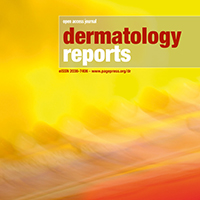Pyoderma gangrenosum-like necrotizing panniculitis associated with Imatinib: A case report
 Smart Citations
Smart CitationsSee how this article has been cited at scite.ai
scite shows how a scientific paper has been cited by providing the context of the citation, a classification describing whether it supports, mentions, or contrasts the cited claim, and a label indicating in which section the citation was made.
Imatinib mesylate is a small tyrosine kinase inhibitor that targets BCR-ABL, ckit and platelet-derived growth factor receptor. It is prescribed by hematologists for chronic myeloid leukemia and acute lymphoblastic leukemia and by oncologists for Gastrointestinal Stromal Tumors (GIST). Cutaneous reactions to Imatinib are common but their incidence and severity widely varies between patients. A self-limited skin rash is the most common adverse effect but there have been reported cases of patients with maculopapular rash, pigmentary changes, superficial edema and rarer and clinically distinctive features such as lichenoid reactions or psoriasis. We here describe for the first time a case of pyoderma gangrenosum–like necrotizing panniculitis, a rare dermatological condition, after initiating therapy with Imatinib.





 https://doi.org/10.4081/dr.2020.8381
https://doi.org/10.4081/dr.2020.8381





